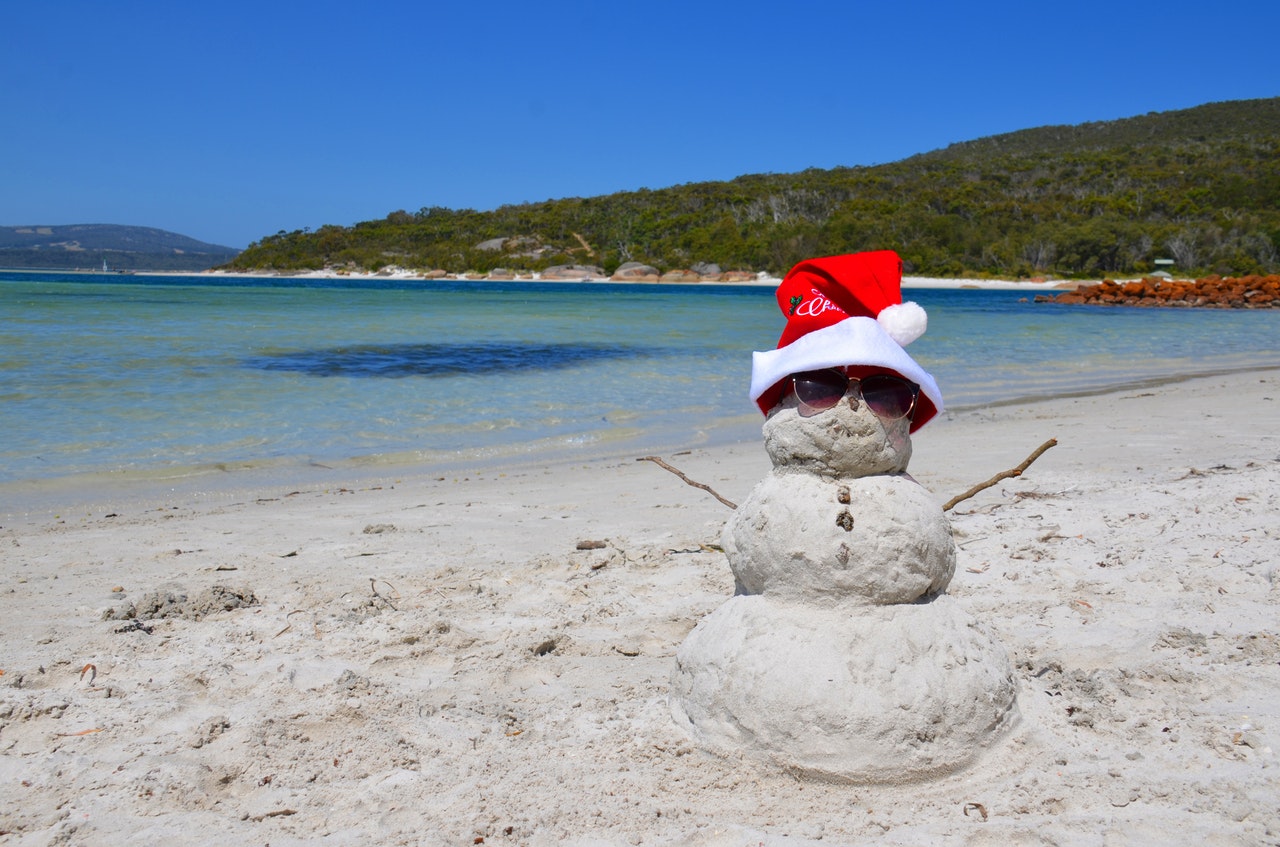Merry Christmas!
Wherever we find ourselves in the world, no matter how the day is celebrated locally, Christmas is a day for goodwill and good cheer… and perhaps some good rum, if you’re south of the border!
Here are some of my favorite ways to celebrate Christmas in some of our favorite countries around the world…
In Belize—Home Renovations And Island Parade
Belize uses Christmas as an excuse for spring cleaning and home renovations, from general sprucing up to new furniture, drapes, and paint… even new roofs and gardens.
Decorations feature multicolored lights, blow-up Santas, reindeer, and lobsters, and neighbors take annual decorating competitions seriously.
On Ambergris Caye, islanders compete for best-decorated boat, and the annual Christmas Boat Parade is a highlight of the season. Hundreds gather along the shores to watch.
In Panama—Christmas Trees Out Of A Meat Locker
The only place in Panama to buy a fresh-cut live Christmas tree is out of the giant refrigerated meat locker of a local Panama City wholesaler.
The rest of the year, this is a great place to shop for steaks. In December, the walk-in freezer is transformed into a winter wonderland.
No snow, but temperatures are cold enough that you’ll want to wear a coat when you come to choose your fir tree. The single annual delivery of hundreds of trees from Canada arrives around Dec. 1 each year.
In Malaysia—Fireworks, Mrs. Claus, And Giant Mushrooms
In Malaysia this time of year, the Clauses can be found in every mall, where everyone—even women in burkas—goes to pose for pictures with them. In addition to brightly trimmed trees, giant mushrooms and suggestive, scantily clad angels feature prominently in the decorating.
Folks here aren’t quite sure what Christmas should be. Christmas Eve buffets include party favors and a New Year’s Eve-style countdown to midnight along with huge fireworks displays.
In Spain—Piñata Pooping Logs
The Catalans’ version of yule logs are called Caga Tió, or “poopinglogs” (with faces and hats). They appear by the fireplace Dec. 8. Caga Tió is fed, watered, and covered at night.
On Christmas Eve he is whacked like a piñata while the family sings: “Christmas Log, Christmas Log. Don’t poop sardines, they’re too salty. Poop nougats! They’re much better.”
The theme is carried through Catalan nativities, which all include a “pooping man” who squats, back to the scene, baring his bottom to… poop (he even comes with a tiny offering).
It’s not as inappropriate as it may sound and reflects the Catalans’ belief in the importance of giving back to the earth.
In Colombia—Annual Festival Of Lights
Every year for the Christmas season, Medellín, Colombia, engages thousands of temporary workers over a period of months to decorate downtown with millions of lights in preparation for the grand lighting on the first of December.
The event is called El Alumbrado, literally “the lighting.”
The celebration is a tremendous source of pride among the people of Medellín and enjoys broad public participation and support. The official lighting (El Alumbrado) is Dec. 1. There’s no better time to visit.
The lights are configured in the forms of Christmas trees, wreaths, angels, Santa, snowmen, and more. Residents of the city are joined by thousands of tourists who come for the spectacle in nightly river walks to enjoy the sparkling scenes.
In Uruguay—Christmas At The Beach
In Uruguay, Christmas occurs midsummer and is the unofficial kickoff for the annual beach season.
In Punta del Este, Uruguay’s world-famous and jet-set beach resort, the focus is on sun, sand, barbecue, and fireworks.
Every home invests in impressive displays, and the week between Christmas and New Year’s gunpowder hangs in the air like a thick fog.
In Ecuador—El Pase Del Niño Viajero
Cuenca’s Christmas Eve Pase del Niño Viajero parade, or Passing of the Traveling Child, is a colorful, often bizarre mixture of the sacred and the profane.
To locals, it is a time-honored Christian festival of thanksgiving and homage that combines Catholic and indigenous traditions.
The eight-hour-plus procession features floats and decorated cars festooned with flowers, fruits and vegetables, empty beer cans and liquor bottles, roasted pigs and chickens. There are also bands, dancers and street performers, stilt-walkers and Biblical characters.
In recent years, the Three Wise Men have made an appearance on Harley Davidsons and Mary and Joseph have cartwheeled the length of Calle Simón Bolívar.
Introduced to Latin America by the Spanish almost 500 years ago, the Pase del Niño Viajero is a Christmas celebration in which likenesses of the infant Jesus are carried through towns and villages.
Cuenca’s parade is the largest; as many as 50,000 participate in the procession, with about 200,000 more watching from sidewalks, balconies, and rooftops.
In The U.K.—London Panto
Christmas in London features live pantomime shows, called panto. The tradition goes back to the Restoration after Cromwell’s Commonwealth was ended by the resumed monarchy.
During the Puritan period, Christmas was banned as a “pagan” holiday, and all the fun ended. With the Restoration, theater was allowed again, and one of the things they invented was pantomime for children.
Panto has many conventions. First, the hero, in a Shakespearean reversal of roles, is usually played by a young actress, along with the hero’s love interest. Then there is the Dame, an older woman played by a man in drag.
In drag too are the Good Fairy and the Wicked Witch, who may be part of the story. There is a chorus, which changes costume often, and sometimes children who dance. Sometimes famous actors and actresses take part. Usually a great mess is made either by cooking or baking something on stage.
The audience is engaged in a silly dialogue full of double entendres that the adults hope the children do not understand. Panto is becoming more modern with themes now including Chanukah, Bollywood, and TV shows.
In France—Oyster Delights
Christmas Eve and Christmas Day, Paris is taken over by oysters. You see pickup trucks filled with them, and, on the street corners, vendors sitting behind tablesful for sale.
All Parisians indulge in the treat, many storing them outside on their windowsills.
The tradition may date back to the French king Henri IV, who loved oysters. Every day during the winter oyster season he had three dozen brought to him on a wagon from Brittany.
In Ireland—The Christmas Swim
On Christmas morning, from beaches, piers, and coves around the country, Irish of all ages gather to immerse themselves in the freezing waters off their shores.
“Swim” is a bit of a misnomer. There is no particular distance that you need to cover, nor any agreed-upon duration you must stay in the water.
You simply join the crowd of people running toward and then into the water (cheered on by well-wrapped-up spectators), screaming as their bodies hit the ice-cold sea.
A quick splash of the arms and legs, then back in to shore to dry off, wrap up, and enjoy a hot drink or a shot of whiskey.
Wetsuits have appeared on the scene in recent years, mostly among the kids, but it remains an unspoken rule among the hardy adults taking part: traditional bathing suits only.
Happy trails,
Kat Kalashian
Editor, LIOS Confidential








